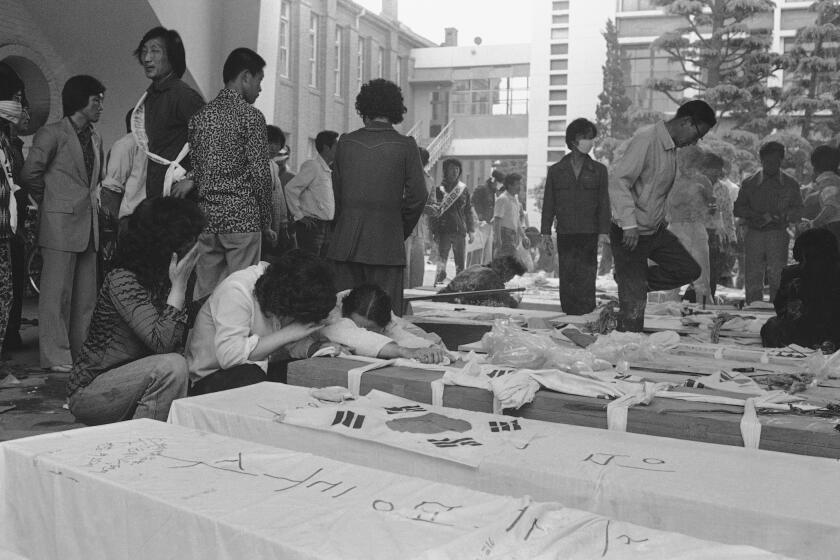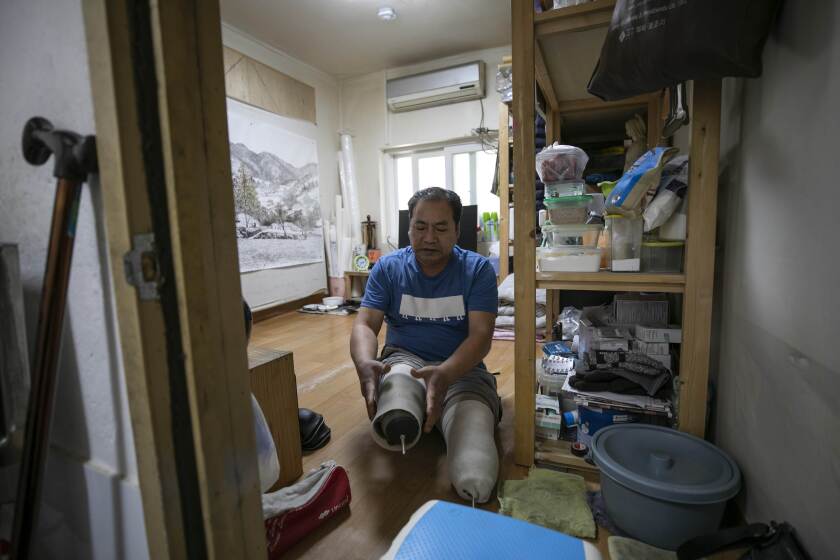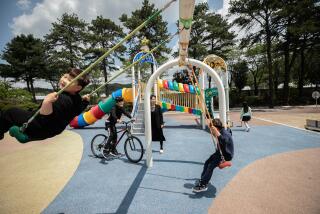
- Share via
CHEORWON COUNTY, South Korea — Her first few months as the new principal of Dochang Elementary had been one long lesson in problems of scarcity, and on a recent Tuesday, Lee Eun-sook was working at several of them.
It was 10:43 a.m., and Lee, who had just finished substituting for a second-grade math class, was back at her desk. She stared into two computer monitors with a creased brow as she contemplated the task at hand: how to balance the school’s shoestring budget without slashing the English tutoring sessions or the after-school programs.
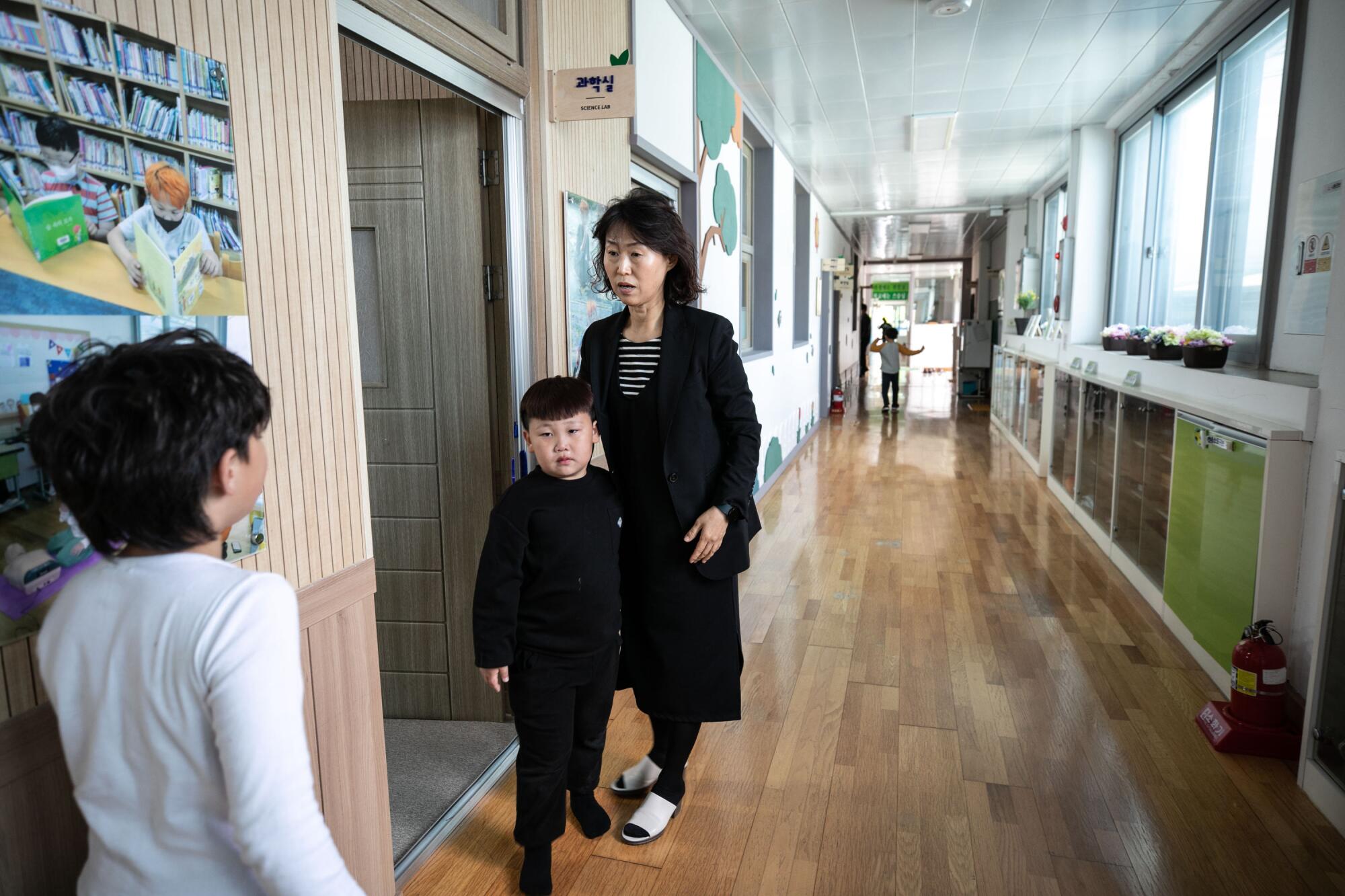
But the scarcity weighing on her most heavily — the one that had become the defining crisis of her short tenure — wasn’t money. It was students. South Koreans have been opting for smaller and smaller families, leaving the country with the lowest fertility rate in the world and a sharp nationwide drop-off in school-age children. In the hardest-hit rural areas, elementary schools like Dochang were closing down, one by one, because there were no longer enough students left to attend them.
When Lee arrived in September, halfway through the South Korean school year, there were just eight students — two short of the minimum needed to avoid closure proceedings. The governing council in Gangwon province was about to sign off on an order making the school a satellite of a larger school nearby before closing it for good.
“There was never a case where the provincial council didn’t approve an administrative order from the education office,” said Lee, 56. “A lot of people said that there was nothing I could do, to just wait out the next six months and take a more comfortable posting at a bigger school.”
But Lee, a former education policy researcher, had come to believe that small schools were the answer to South Korea’s new demographic realities — a way to provide a better education to fewer children as well as an alternative to the desk-bound orthodoxy of big-city schools. “It felt like my calling to try to save them,” Lee said.
As South Korea confronts a dark chapter of its history, a former soldier’s quest for repentance becomes a lesson in the fragility of memory.
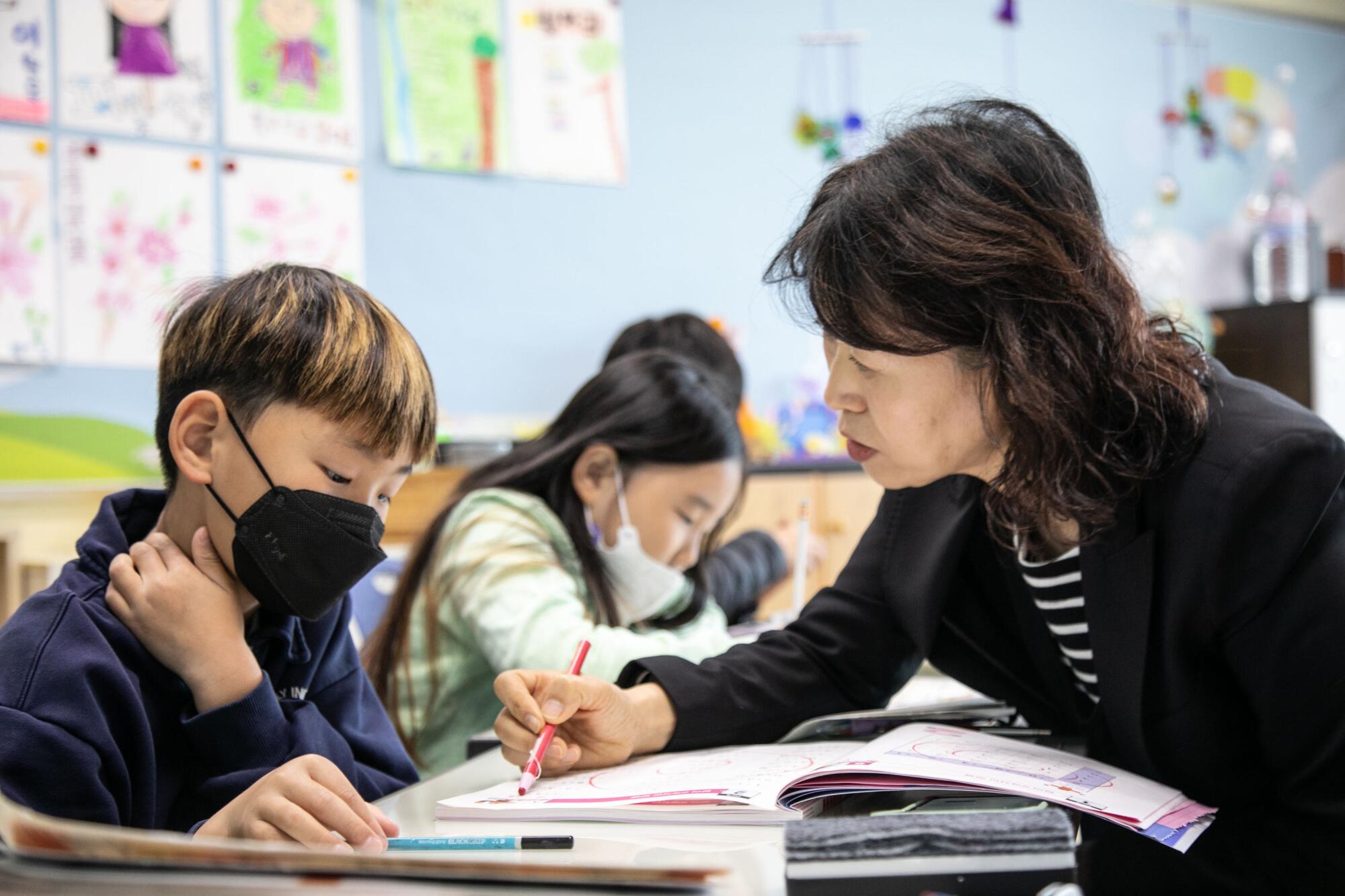
She spent weeks collecting signatures across Cheorwon County, hosting recruitment sessions for parents and pleading her case to a sympathetic council member. In late October, she sent the council a formal letter requesting a stay of closure, arguing that the government’s ongoing attempts to bolster the number of births, increasingly seen as a national crisis of the highest order, depended on schools like Dochang. For the children who would be born as a result of these policies, Lee wrote, “small schools must get ready, and they must be maintained.”
The stay was granted, and Dochang started the 2023 school year in March with 17 students.
Despite the win, Lee knows that long-term prospects are bleak. In the last 10 years, the number of elementary school-age students in the county has fallen from 2,687 to 1,832. Nearly every one of the 16 elementary schools in the county has lost students over this period, some by the hundreds.
Dochang, the smallest, would most probably be the first domino to fall.
::
The decline of rural schools in South Korea began with the country’s rapid industrialization in the 1960s and 1970s, when farming and fishing villages saw a mass exodus of young workers to Seoul and other big cities.
Cheorwon County has one of the highest rates of population flight, as young people leave in search of jobs, better education opportunities or greater access to services such as medical care and public transportation. Officials recently classified it as an “extinction risk.”
Due to its proximity to the Korean demilitarized zone, the county is heavily fortified, and military personnel and their families make up around 60% of the population. In recent years, however, even the military has been moving out.
Since 2018, when the total population was around 47,000, the county has lost about 1,000 people a year.
Seoul has fewer people living on the streets than Los Angeles. But tens of thousands live in illegal units so small there is barely enough space to lie down.
At a senior center across from Dochang Elementary, a group of grandmothers whose children and grandchildren have all long since left said they worried that closing the school would drain the community of what little vitality remained.
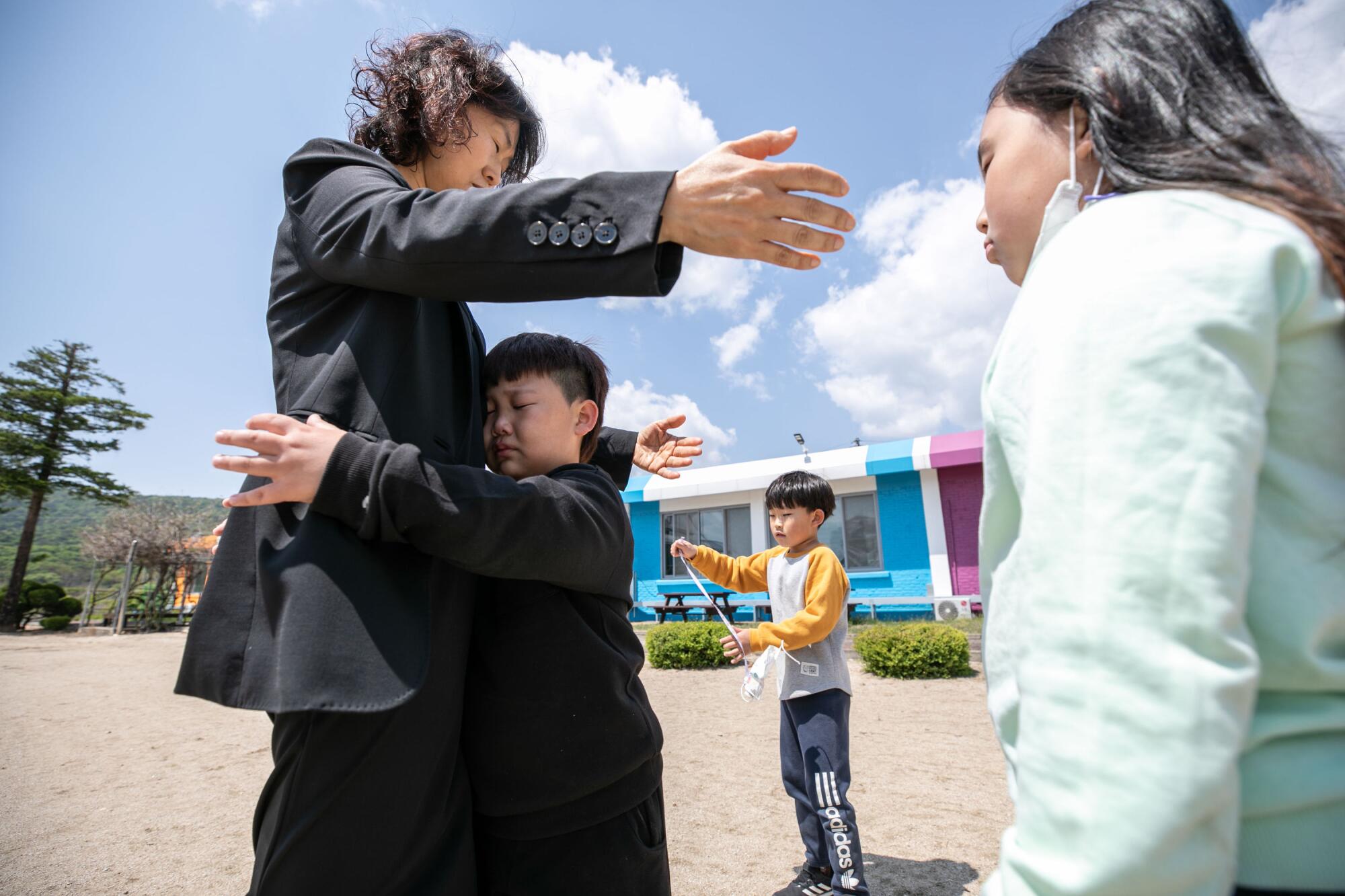
“When else would we see children?” said Ha Su-ja, 79. “I like to listen to the sounds of them playing when the school holds sports day.”
Nationwide, the number of elementary schools in rural areas has dropped from around 5,200 in 1982 to roughly 4,000 today.
Schools, along with hospitals and other public institutions, have overwhelmingly amassed in cities, seeding the very demographic emergency the country now faces. More than half the population lives in the Seoul metropolitan area, where the high cost of living — including education — has discouraged people from having children.
As a result, South Korean women now give birth to just 0.78 children on average, far below the 2.1 needed to maintain the current population.
Researchers at Seoul National University project that if the current trends continue the population will drop from 51 million to about 17 million by 2100. Seen as an existential threat to the economy and social welfare programs, the decline has also raised concerns that the country will lose ground to its enemy North Korea, where the population is more stable.
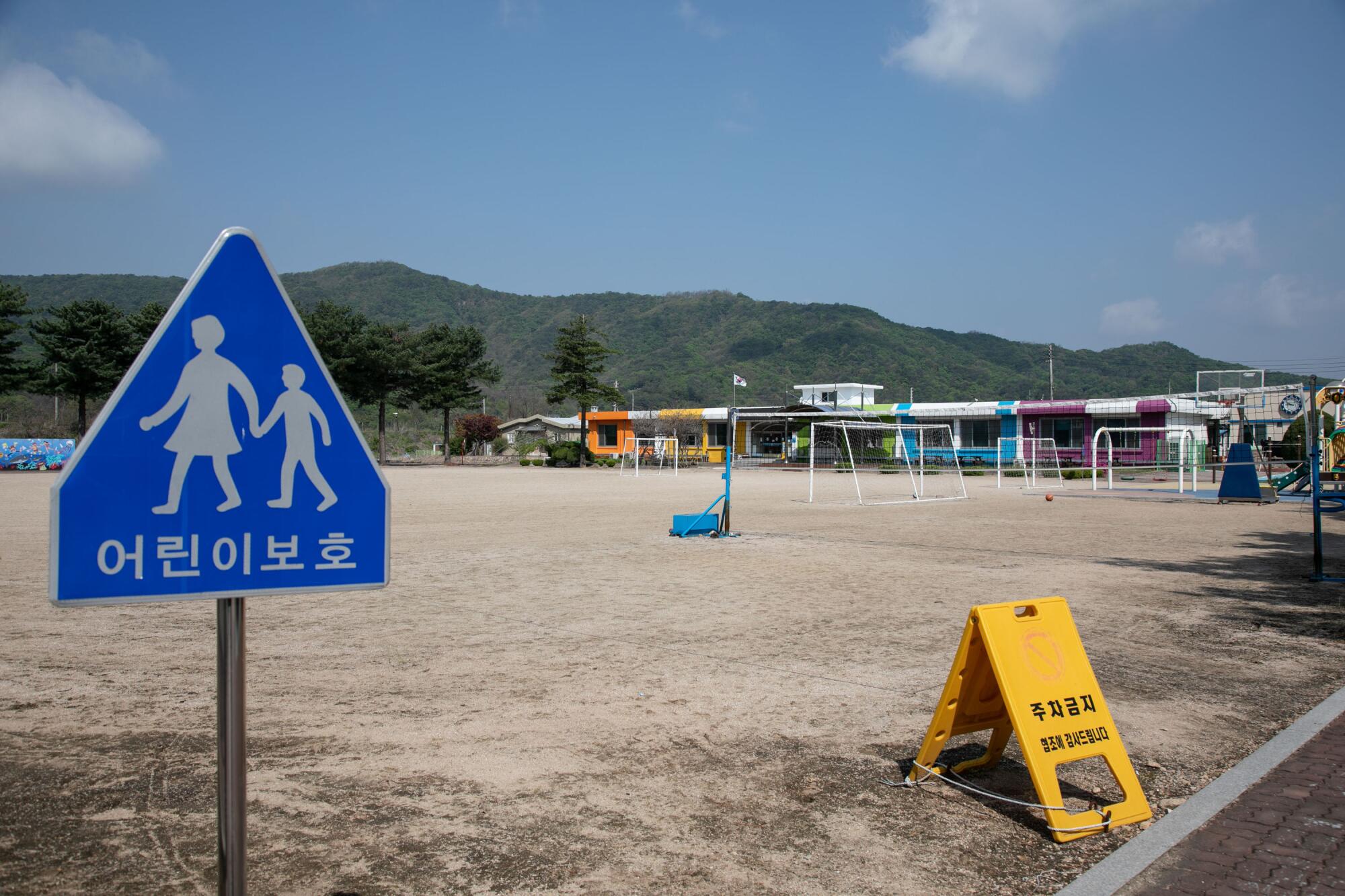
To slow the decline and ease overcrowding in the capital, the government is trying to lure people back to rural areas. With disbursements from a new national $750-million-a-year “rural extinction prevention fund,” Cheorwon plans to invest in high-tech agriculture to create jobs and bring in residents.
But for repopulation policies to work, there will need to be schools for the new children to attend. Both the county and the provincial education office run grant programs to keep undersized schools such as Dochang afloat.
“Every local government is doing something similar,” said Shin Min-ho, who leads the county’s human capital division. “The goal is to fund specialized programs to help bring new students to these rural areas, but there are so many regions competing for a limited number of students that we just don’t know how effective it will be.”
::
By 3:22 p.m., Lee had supervised snack time, led a playground session, bandaged a finger and handed off a sick student to her mother. She was now reasoning with one of the younger boys, who had gotten into an argument with an older classmate.
The boy sat on a small sofa in her office, steaming. Lee had instructed him to write a letter explaining why he was upset and how he could have handled the situation better.
“Everybody has different limits to what they can tolerate and forgive,” Lee told him. She let the thought sink in before continuing: “He’s probably upset too, don’t you think?”

Talking about it calmed him, and Lee sent him off with a pat on the shoulder.
Socialization had been the biggest concern among parents at the recruitment sessions Lee held last year. How would children develop social skills with so few classmates?
“I was worried that it would be difficult for him to make friends at a small school — that he wouldn’t be able to adjust to middle or high school later on,” explained one mother, An Ji-sun, 37.
In preschool, her son Su-hyeok lacked confidence and would cry while waiting for the bus in the morning. Hoping to get him out of his shell, An had been determined to send him to first grade at one of the bigger schools in the area.
But Lee argued that social skills didn’t come from releasing children into a crowd and letting them figure things out. They were something to be actively nurtured and deliberately practiced, and small schools could achieve this better than bigger ones.
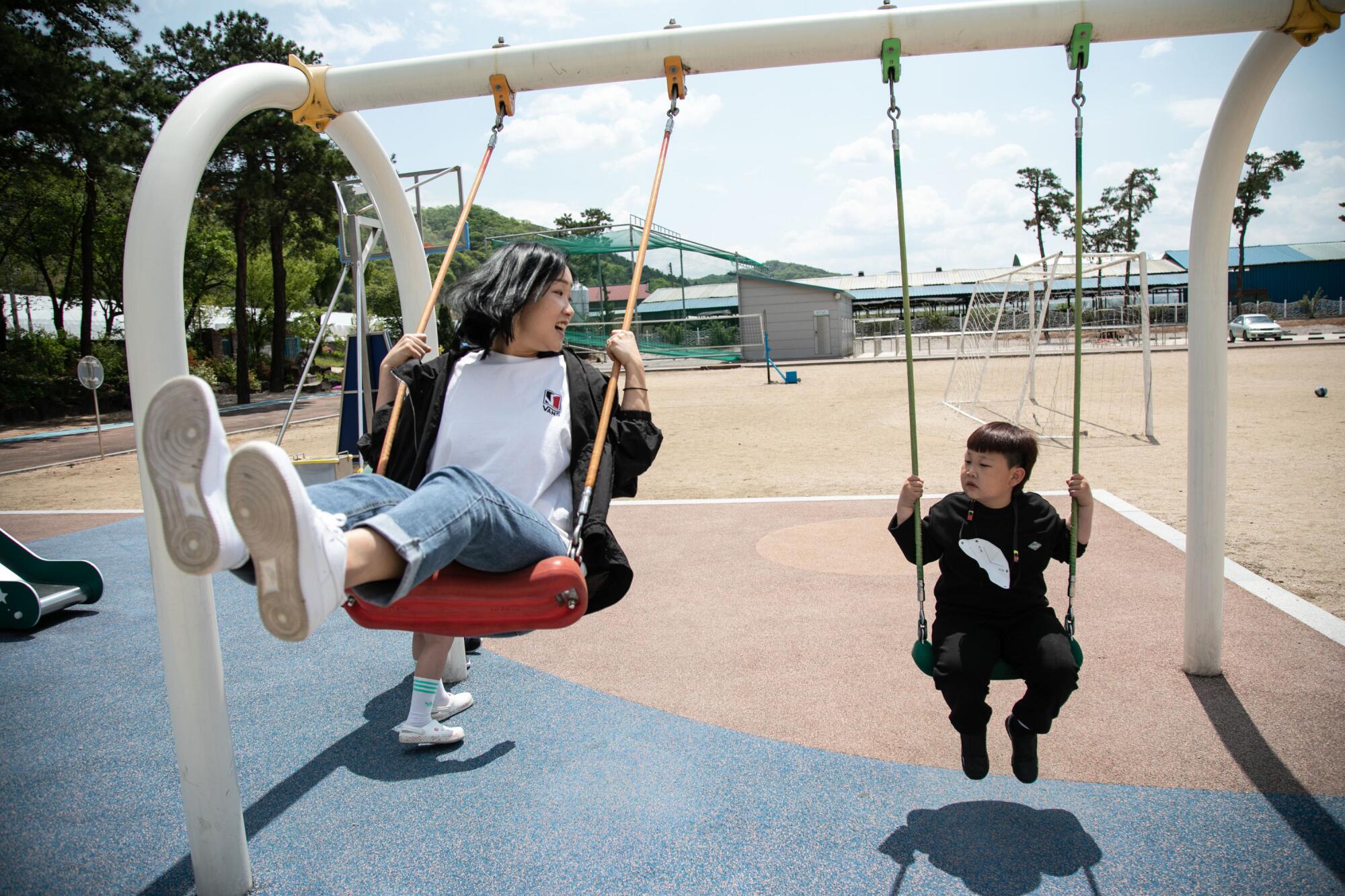
“Even if a child goes to a big school, they can’t be close with everybody,” Lee said. “They are really building one or two deeper friendships.”
Lee’s emphasis on social bonding and play over test scores appealed to An. Before moving to Cheorwon in 2012 because of her husband’s military job, she had been a math teacher at an elite hagwon, or private academy, in Seoul. In what was said to be the best school district in the country, burned-out kids rolled around suitcases because they had so many books. Witnessing that made her vow to give Su-hyeok a much happier childhood.
He started first grade at Dochang in March.
A big part of the draw was the recently expanded extracurricular programs, including soccer, food art, tennis, golf, kimchi-making, fishing, family camping, a book fair, grape-picking and flying drones. A surfing trip is planned for the summer. On racks behind the school, there are enough bicycles, unicycles and inline skates for every student.
“Every break period or recess, we always send the children outside,” Lee said. “No exceptions.”
All of this requires the six teachers, Lee included, to fill multiple roles and to collectively care for every student as their own. Between managing the budget and mediating arguments, Lee is also the school nurse. Kim Do-gi, the 51-year-old director of school affairs, oversees the school’s gardening program on a plot of land just behind the school.
“The hope is that the kids will learn to respect nature and the environment,” Kim said, inspecting the newly tilled dirt where corn and sweet potatoes will be planted. “But the teachers do most of the actual farm work.”
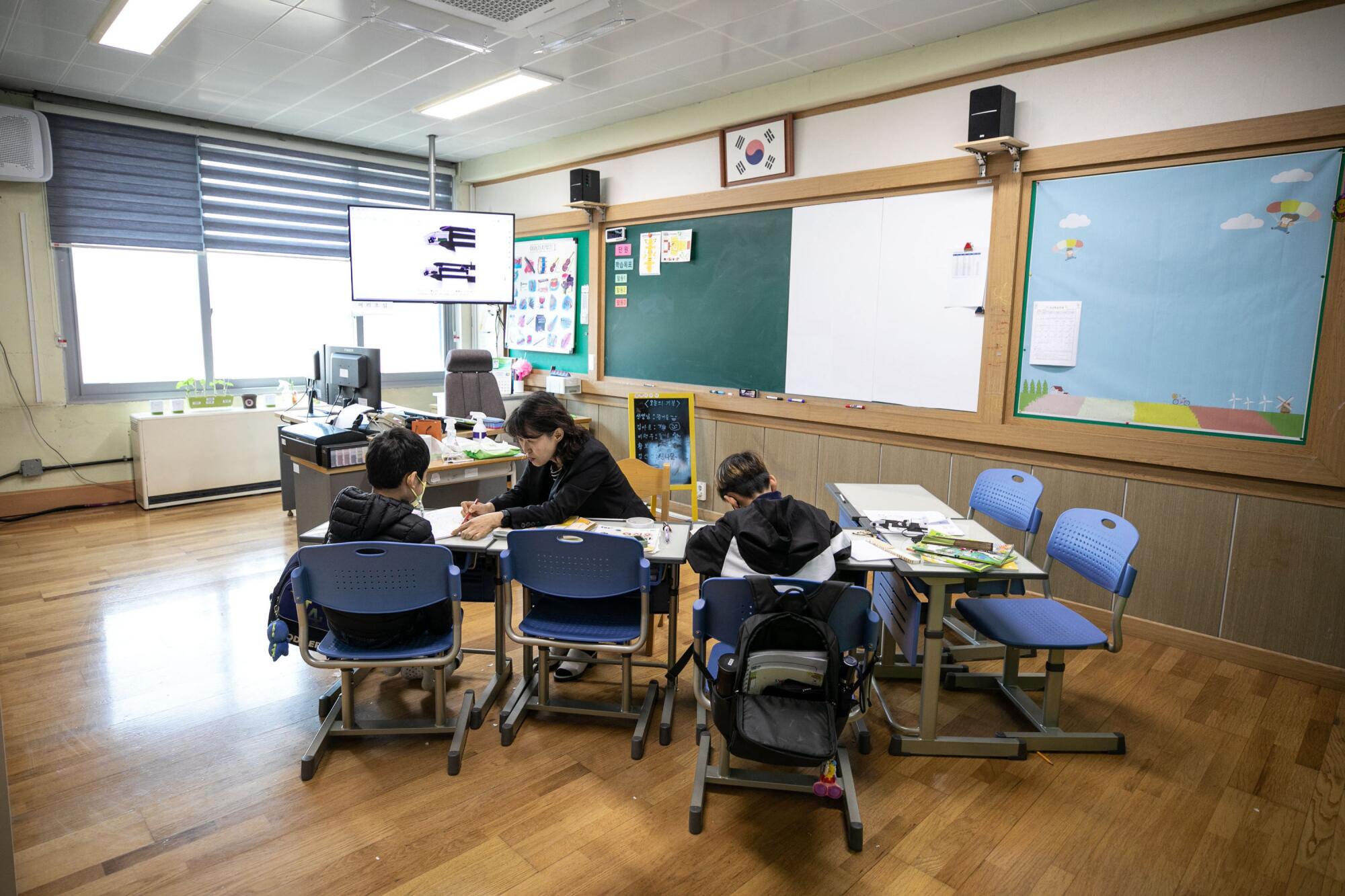
A little over a month into the semester, An was already full of stories that Su-hyeok had proudly brought home — the time that a friend had behaved poorly over some Pokemon cards but he just let it go because the friend was having a bad day, or when Principal Lee had asked the first-graders for suggestions on how to allocate turns on the two swings and his contribution had been cheered on by his classmates.
“It seems like his ability to empathize with other people has grown so much,” An said. “Not just the other kids, but his teachers too.”
Sending Su-hyeok to Dochang had punctured her own belief that a good education was one that could mold every child into a self-assertive “leader” type.
“Sending him to a small school like Dochang made me realize that his ability to be a supportive presence for his friends would be one of his greatest strengths later in life,” An said. “It was a complete paradigm shift for me.”
::
The day was winding down and Lee patrolled the halls one last time, stopping by a wall in the foyer displaying a grid of yearbook photographs.
Starting in 1968, they depicted Dochang’s golden years in the 1980s, when there were about 30 students, followed by the steady dwindling of the student body in more recent years. The last nine frames in the grid, which ran until 2032, were placeholders for the future, holding stock photos of silvergrass instead of students.
How long could they really keep going? It would take significant time for any sort of repopulation policy to take hold in the county — time that Dochang didn’t have. In the next few years, graduations would once again deplete the school, putting it back in the red.
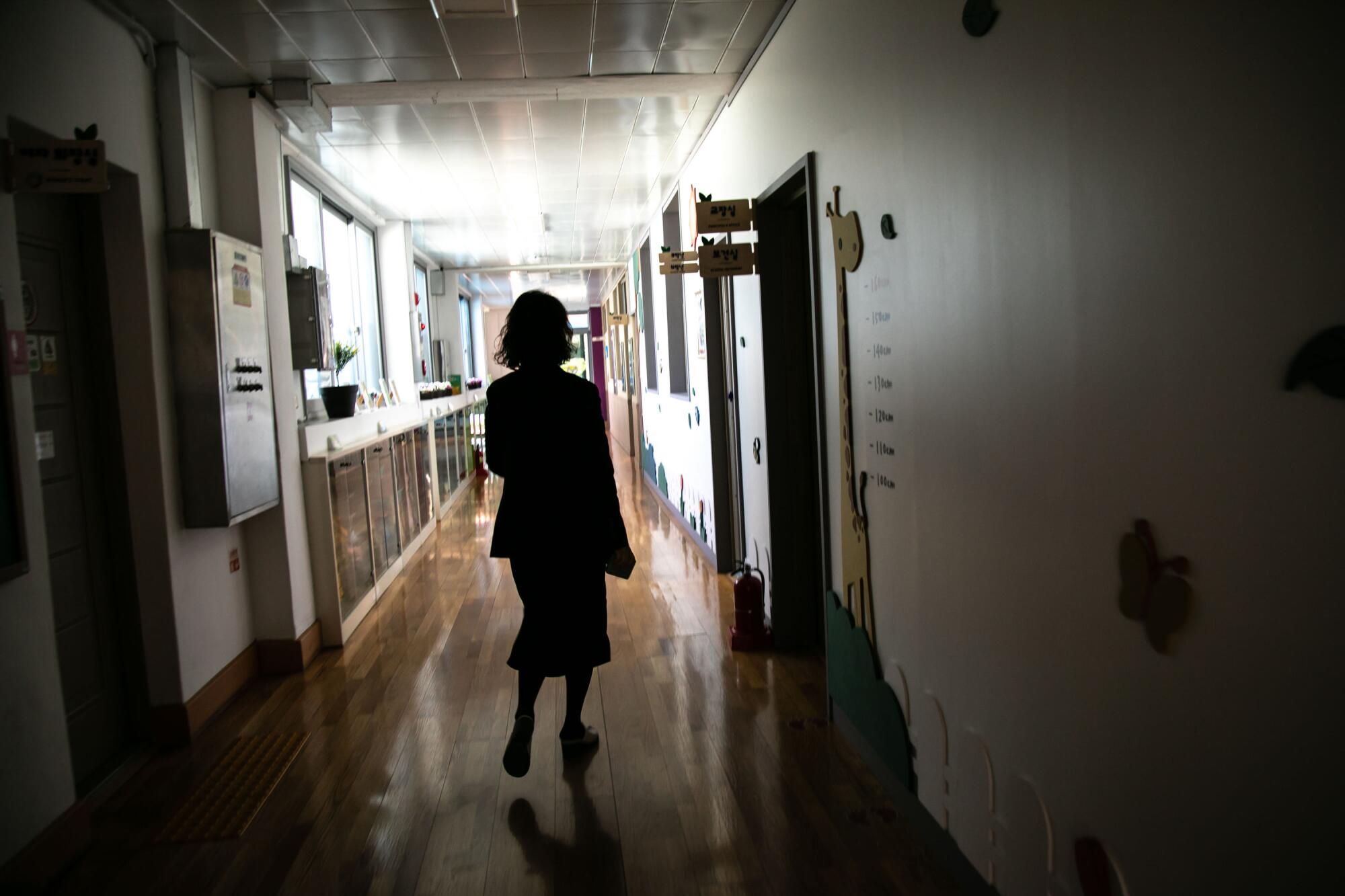
But in the last six months, Dochang had built a foundation that Lee believed would help it outlast even her own five-year term. She predicted that the school would go strong for at least the next seven or eight years — if they were lucky, maybe even 10.
Lee allowed herself a moment with this thought before snapping out of it. That future was out of her hands. And her duty as an educator was to answer the needs of the present — to fight for the students who were here now.
“I want the children to be proud that they are from Cheorwon, no matter how small it is,” Lee said. “I want the fact that they graduated from Dochang to give them that one extra spoonful of confidence.”
More to Read
Sign up for Essential California
The most important California stories and recommendations in your inbox every morning.
You may occasionally receive promotional content from the Los Angeles Times.
